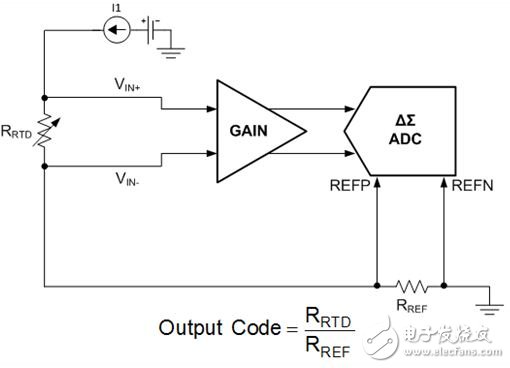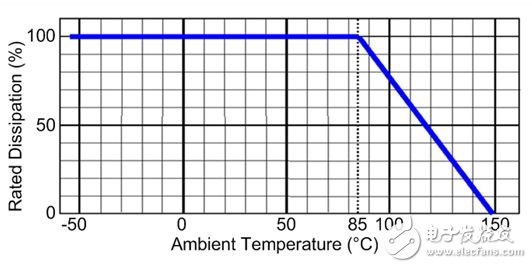The calculation of resistor self-heating is a very basic concept, but many engineers are not familiar with it or are often ignored by them.
I realized the importance of the principle of the recently designed high precision resistive temperature detector (RTD) acquisition system. For the simplified design in Figure 1, the errors caused by the self-heating of the resistors in the signal path need to be considered to prevent the undesired error levels they cause.

Figure 1: Simplified Ratio Meter RTD System
This design is designed for ratiometric measurements, so the final conversion result of the analog-to-digital converter (ADC) is directly dependent on the absolute value of the reference resistor RREF. Since the excitation current flows through RREF, it consumes power and generates heat, which can cause resistance changes and affect system accuracy. In addition, resistor self-heating effects are also important in many other applications, such as current sensing or power measurement, depending on the absolute value of the resistor, as it may change resistance when the resistor consumes power.
The temperature coefficient of the resistor (or TC) specifies the range of resistance change when the resistor temperature changes. The unit of resistor TC is typically one-millionth (ppm/°C) per degree Celsius. A 1% resistor has a TC of approximately +/-100ppm/°C, while a high precision metal foil resistor provides a TC of less than 0.1ppm/°C.

Equations 1 and 2 are examples of how to use the resistor TC specification to calculate the resistance of the 1kΩ, ±100ppm/°C resistor ΔRTC when the temperature changes from 25°C to 125°C.
In general, smaller surface mount components (0201, 0402, 0603, etc.) are less efficient in terms of power dissipation and therefore have a very high self-heating coefficient θSH, sometimes as high as 1000 °C/W or more! These smaller resistors are typically rated at less than 0.1W, but their temperature changes extremely rapidly with power dissipation.

Equation 3 calculates the resistance temperature increase ΔTSH caused by power dissipation. Equation 4 inserts ΔTSH into Equation 1 instead of ΔT to determine the resistance change caused by self-heating at 100 °C/W moderate self-heating and 0.5W power dissipation.
Although the self-heating coefficient is usually not provided in the resistor product specification, it usually includes a power rating drop curve, which allows you to calculate the self-heating coefficient in reverse.
The power rating drop curve specifies the maximum power dissipation of the resistor for ambient temperature without exceeding the maximum specified temperature. Figure 2 is an example of a resistor power rating drop curve for a 0.5W resistor.

Figure 2: Power rating drop curve for a 0.5W resistor
You can easily determine the maximum operating temperature TMAX from the curve in Figure 2, which is the value on the x-axis at a nominal dissipation equal to 0%. In the example shown, the maximum operating temperature is 150 °C.
In addition, it is not possible for a resistor to operate at 100% rated dissipation (TMAX_PWR100%) at 85 °C. You can calculate the value for θSH from this temperature, the maximum operating temperature, and the power rating of the resistor as follows.

You can now determine the amount of heat increase by using the calculated self-heating factor, so Equation 3 and Equation 4 can be used to calculate the change in resistance caused by power dissipation. Therefore, you can determine the impact on the accuracy of the final system based on the change in resistance.
Therefore, the next time you design a system that requires high-precision resistor values, you must consider the self-heating factor of the resistor!
With Samsung Chips 100LM/W high light efficiency .
High brightness & high CRI CRI>80
Excellent thermal management t ensure long lifetime of LED
Suit for different kinds of indoor illumination lighting :such as shopping mall , super-market , hotel, restaurant ,ect
Strong spring to hold up the downlight
Dimmable Downlight,3W Dimmable Downlight,15W Dimmable Downlight,30W Dimmable Downlight
SHENZHEN KEHEI LIGHTING TECHNOLOGY CO.LTD , https://www.keheiled.com